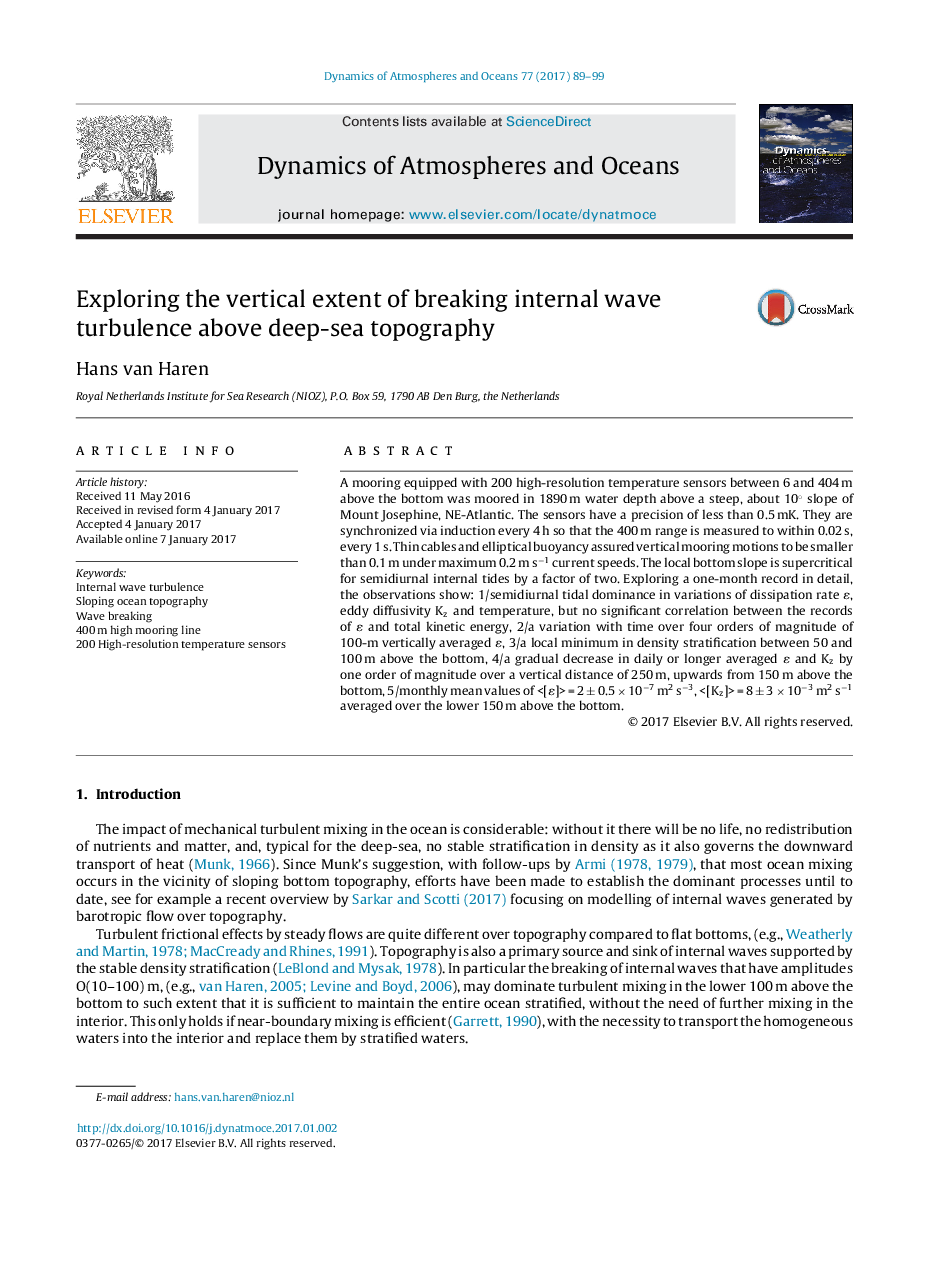| Article ID | Journal | Published Year | Pages | File Type |
|---|---|---|---|---|
| 5779138 | Dynamics of Atmospheres and Oceans | 2017 | 11 Pages |
Abstract
A mooring equipped with 200 high-resolution temperature sensors between 6 and 404 m above the bottom was moored in 1890 m water depth above a steep, about 10° slope of Mount Josephine, NE-Atlantic. The sensors have a precision of less than 0.5 mK. They are synchronized via induction every 4 h so that the 400 m range is measured to within 0.02 s, every 1 s. Thin cables and elliptical buoyancy assured vertical mooring motions to be smaller than 0.1 m under maximum 0.2 m sâ1 current speeds. The local bottom slope is supercritical for semidiurnal internal tides by a factor of two. Exploring a one-month record in detail, the observations show: 1/semidiurnal tidal dominance in variations of dissipation rate ε, eddy diffusivity Kz and temperature, but no significant correlation between the records of ε and total kinetic energy, 2/a variation with time over four orders of magnitude of 100-m vertically averaged ε, 3/a local minimum in density stratification between 50 and 100 m above the bottom, 4/a gradual decrease in daily or longer averaged ε and Kz by one order of magnitude over a vertical distance of 250 m, upwards from 150 m above the bottom, 5/monthly mean values of <[ε]> = 2 ± 0.5 Ã 10â7 m2 sâ3, <[Kz]> = 8 ± 3 Ã 10â3 m2 sâ1 averaged over the lower 150 m above the bottom.
Keywords
Related Topics
Physical Sciences and Engineering
Earth and Planetary Sciences
Atmospheric Science
Authors
Hans van Haren,
